Agricultural Sensor Technology: Revolutionizing Smart Farming for a Sustainable Future
The agricultural revolution marked a pivotal moment in human history, enabling sustainable food production and settlement. However, with the global population on the rise, modern farming has become both more intricate and increasingly optimized. Technological advancements now play a crucial role in boosting productivity and improving the quality of agricultural operations. Among these innovations, agriculture sensors have emerged as vital components of smart farming technology, driving efficiency and sustainability from the ground up.
Here, explore the evolution and impact of advanced sensor technologies on agriculture. By harnessing the power of real-time data and smart systems, today’s farmers are able to transform traditional practices into precision farming operations.
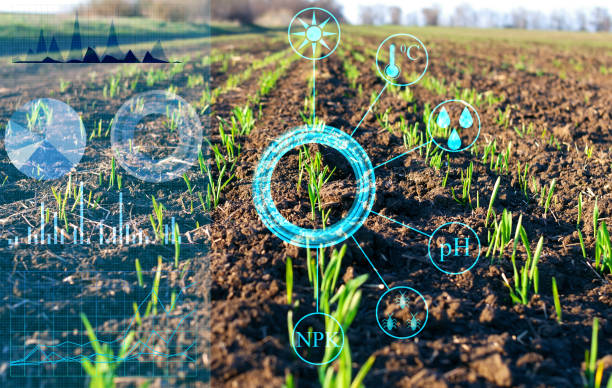
Look closely at these critical sensors used in this technological revolution and learn how they are reshaping modern agriculture.
Introduction to Agricultural Sensors and Smart Farming
As the world faces mounting pressures on food production and resource management, the role of technology in agriculture has never been more important. Agricultural sensors are now at the forefront of a smart farming revolution that is changing the way we produce food. These devices, capable of measuring a range of environmental and operational variables—from soil pH and moisture to the precise location of livestock—offer farmers a data-driven approach to maximizing yields and reducing waste.
The integration of sensor systems in modern farms enables real-time monitoring, automated adjustments, and proactive decision-making. This high degree of control and information sharing between devices is driving improvements in irrigation scheduling, pest management, and nutrient optimization. Ultimately, these technologies are creating a more sustainable agricultural ecosystem by enhancing resource efficiency, reducing environmental impact, and increasing profitability.
Throughout this article, we will explore the various types of agricultural sensors, their benefits, applications, and the promising future of sensor technology in agriculture. In doing so, we will see how each type of sensor plays its part in ensuring better crop management, healthier livestock, and more efficient farming operations.
Different Types of Agricultural Sensors
Agricultural sensors come in many shapes and sizes, each designed to measure specific environmental parameters. The data collected from these sensors not only helps farmers gain in-depth insights into their fields but also provides the foundation for a range of precision agriculture strategies. In the sections below, we delve into some of the key sensors driving today’s smart agriculture.
1 pH Sensors
pH sensors play a vital role in agriculture. They provide valuable insights into soil conditions and nutrient availability for optimal plant growth. Nutrient availability is crucial for plants—just as nutrients are vital for animals and other living organisms. To maximize plant growth potential and achieve high-yielding harvests, a thorough understanding of soil conditions is essential.
pH sensors offer valuable feedback by measuring the acidity or alkalinity of the soil. This information enables farmers to identify nutrient deficiencies as well as detect the presence of unwanted chemicals. By incorporating pH sensors into smart agriculture systems, farmers can continuously monitor soil pH fluctuations, ensuring that conditions remain ideal for robust plant growth and nutrient uptake.
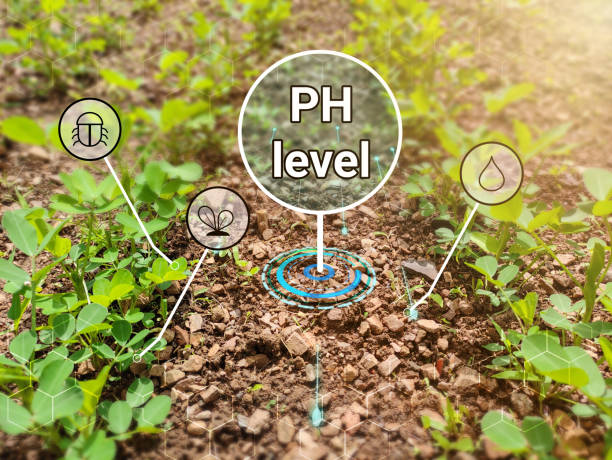
With real-time data on soil pH, farmers gain a complete understanding of the soil’s health. This data is instrumental in making informed decisions regarding fertilizer application and soil amendments. Constant monitoring allows for precise adjustments, creating optimal conditions for plant growth while avoiding both over-fertilization and nutrient imbalances.
Benefits
The benefits of pH sensors in agriculture are wide-ranging. Continuous data collection provides detailed insights into soil chemistry over daily, weekly, monthly, and even annual cycles. This detailed information helps farmers adjust their practices to create the best environment for crops. By monitoring and managing soil pH, farmers can quickly address nutrient deficiencies and avoid issues that might negatively affect crop quality or yield.
Precision farming techniques are greatly enhanced with the use of pH sensor data. This real-time information is critical not only for improving crop yields but also for reducing the environmental impact of agricultural operations. By ensuring that plants receive the exact nutrients they need, farmers can minimize fertilizer runoff and promote sustainable, eco-friendly practices.
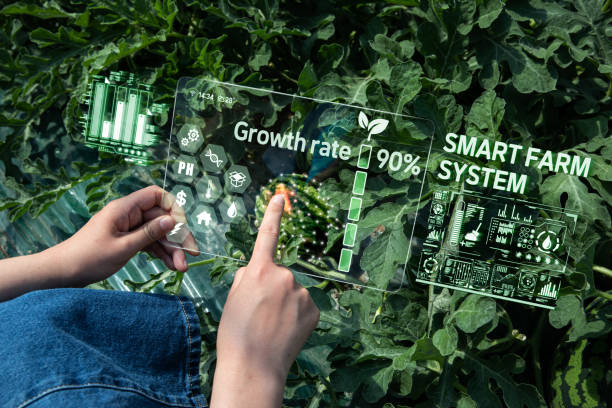
Ultimately, pH sensors are valuable tools that empower the farming industry to adopt precision agriculture practices. The quantitative insights provided by these sensors lead to better soil health management, improved crop yields, and a reduction in unnecessary chemical inputs. This technological approach not only enhances agricultural productivity but also paves the way for more sustainable and environmentally responsible farming methods.
2 GPS Sensors
GPS sensors, though traditionally associated with industries such as automotive and telecommunications, have found significant utility in the field of smart agriculture. Throughout history, farmers have sought effective ways to monitor their livestock, and modern GPS technology has revolutionized animal tracking. By integrating GPS sensors into their operations, farmers can easily track the location and movement of their livestock, ensuring efficient herd management.
By utilizing GPS sensors—one of the many innovative types of sensors available—farmers can monitor the location and movement of livestock with the push of a button. This advanced technology offers precise tracking and mapping of animal movements, contributing to improved herd safety and overall farm security.
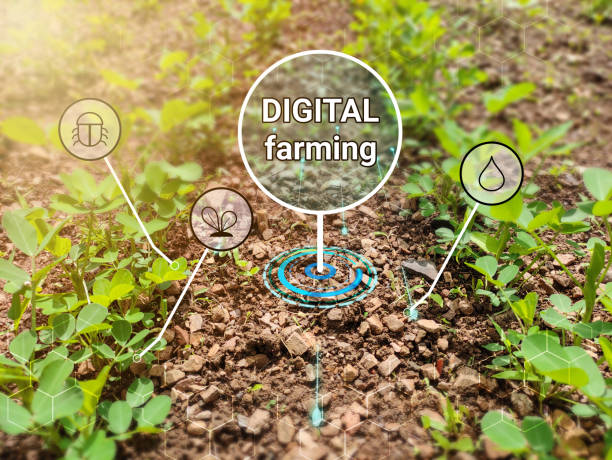
In modern agriculture, GPS sensors are commonly attached to collars or ear tags worn by livestock. This enables farmers to monitor animal location in real time, even across vast grazing lands. The continuous data provided by GPS sensors is invaluable for managing large herds, as it aids in promptly locating any animals that stray or are potentially stolen.
Beyond monitoring, GPS sensor data can be integrated into other smart agriculture technologies, such as cloud-based platforms and advanced data analytics systems. This integration enables the generation of insights that help optimize grazing patterns, determine feed allocation, and assess overall animal health. Ultimately, the adoption of GPS sensor technology contributes significantly to improved livestock management and farm productivity.
3 Agricultural Temperature Sensors
Agricultural temperature sensors play a critical role in smart agriculture, serving dual functions for monitoring ambient conditions and mechanical asset performance. In certain agricultural industries—such as the production of ice wine—temperature control is of paramount importance. For example, ice wine harvesting occurs when ambient temperatures drop to between -10°C and -12°C during the harvesting season, and precise temperature and humidity measurements are essential for a successful crop.
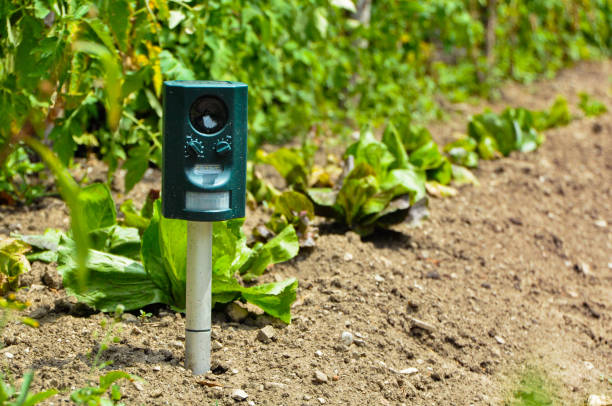
Temperature sensors are indispensable for monitoring both environmental conditions in outdoor fields and indoor storage facilities such as greenhouses. These sensors continuously track temperature fluctuations, ensuring that the ambient conditions remain within the optimum range for crop growth. In addition, temperature sensors are also used for monitoring the operational health of agricultural machinery and equipment, including irrigation systems and storage units.
By providing accurate temperature data, these sensors enable farmers to prevent crop damage due to extreme conditions and to optimize the use of heating or cooling systems as needed. Moreover, monitoring the temperature of mechanical assets allows for early detection of potential issues, reducing downtime and ensuring smooth operations.
In essence, agricultural temperature sensors serve a dual purpose by supporting both crop and asset management. They help maintain optimal growing conditions, protect product quality, and ensure that machinery operates efficiently. This multifaceted utility makes them an essential component in modern smart agriculture.
In-Depth Analysis and Technological Integration in Smart Agriculture
As technology continues to revolutionize the agricultural landscape, sensor systems have become increasingly integrated with other advanced technologies to create holistic smart farming solutions. The aggregation of sensor data through digital platforms, the use of artificial intelligence to analyze these datasets, and the integration of cloud-based systems for real-time decision making are transforming the way farmers manage their operations.
In today’s interconnected world, sensor data is not gathered in isolation. Instead, it forms the backbone of precision agriculture strategies. Data from pH, GPS, temperature, moisture, and various other sensors is uploaded to centralized platforms where powerful analytical tools can process vast amounts of information in seconds. With these insights at their fingertips, farmers can make informed decisions about irrigation schedules, fertilizer applications, pest management, and even harvest timing.
Integration with mobile apps and real-time alerts allows farm managers to monitor field conditions remotely and respond rapidly to any issues. For example, if a temperature sensor indicates a sudden drop in ambient temperature in a greenhouse, alerts can be automatically triggered, prompting immediate interventions to protect sensitive crops.
This technology-driven approach not only optimizes resource usage but also minimizes environmental impact. By applying inputs only where needed, farmers can reduce waste, lower costs, and limit the runoff of potentially harmful chemicals into nearby ecosystems.
Through advanced integration, agricultural sensors provide a synergy that significantly boosts the efficiency of modern farming operations. The future of agriculture is being shaped by these data-centric approaches, ensuring that the industry remains both productive and sustainable in an era of rapid technological change.
Benefits and Challenges of Agricultural Sensor Technology
The deployment of sensor technology in agriculture offers numerous benefits while also presenting its own set of challenges. On the benefits side, sensor systems deliver real-time data that enhances decision-making and increases the overall efficiency of farming practices.
Benefits:
- Enhanced decision-making through detailed, real-time insights into soil, crop, and environmental conditions.
- Increased efficiency by enabling precision farming techniques that reduce input waste and optimize resource usage.
- Improved crop quality and yield as sensor data helps to maintain optimal growing conditions.
- Reduced environmental impact due to targeted irrigation, fertilization, and pest control measures.
- Better management of livestock through precise tracking and movement analysis using GPS sensors.
Challenges:
- High initial setup costs and the need for continuous maintenance and technical support.
- Data overload that can be overwhelming without proper analytics tools to process and interpret sensor information.
- Integration challenges with legacy systems and existing farm management practices.
- The requirement for ongoing training and education of farmers to effectively utilize sensor data.
Despite these challenges, ongoing advancements in sensor technology and data analytics are making these systems more accessible and easier to manage. In addition, partnerships between technology providers and agricultural stakeholders are steadily driving down costs and offering comprehensive support packages. Ultimately, the benefits far outweigh the challenges, driving a new era of efficiency in agricultural practices.
As more farmers adopt these technologies, the collective knowledge and expertise will grow, leading to further improvements and innovations in smart agriculture.
Future of Agricultural Sensor Technology
The future of agricultural sensor technology is rich with promise and full of innovation. The market is witnessing a constant influx of new sensor solutions that aggregate data, relay critical information to farmers, and enable highly responsive, automated agricultural processes.
With continuous improvements in sensor accuracy, durability, and cost-effectiveness, these technologies are becoming more accessible to farms of all sizes—from small family operations to large-scale agribusinesses. Future developments are likely to see even greater integration with artificial intelligence, machine learning, and robotics, further revolutionizing how data is collected and acted upon.
Imagine a farm where every square meter is monitored by a network of sensors that continuously analyze soil composition, crop health, ambient conditions, and even pest activity. This data, processed in real time, would provide actionable insights that ensure every plant receives exactly what it needs at every stage of growth. Such innovations promise to push productivity and sustainability in agriculture to unprecedented levels.
Moreover, global collaborations in agricultural research are accelerating the pace of sensor innovation. As academic institutions, technology companies, and agricultural experts work together, we will see the development of multi-functional sensor systems that address an even broader range of parameters—from water quality and nutrient distribution to localized climate variations.
The future of sensor technology in agriculture is undoubtedly intertwined with the evolution of smart farming as a whole. As these systems become more refined and integrated, they will continue to drive efficiency, resource conservation, and ultimately, global food security.
Case Studies and Real-World Applications
To better appreciate the value of agricultural sensor technology, it is helpful to examine real-world applications and case studies that showcase its benefits in action. Around the world, pioneering farmers and agribusinesses are leveraging sensor data to drive transformative changes in their operations.
In one notable case, a midwestern farm integrated a complete suite of sensors—including pH, moisture, temperature, and GPS tracking—into its management system. By gathering real-time data on soil composition and environmental conditions, the farm was able to adjust irrigation patterns and fertilizer applications with remarkable precision. The result was a significant boost in crop yield, reduced input costs, and a decline in chemical runoff into nearby water bodies.
Another example comes from a livestock operation in Australia, where GPS sensors attached to ear tags allowed for continuous monitoring of animal movements. This technology not only improved herd management but also provided vital insights into grazing patterns. The collected data helped optimize rotational grazing practices, ensuring that pastures were neither overgrazed nor underutilized.
These case studies, along with many others, underscore the transformative potential of sensor technology in agriculture. They serve as concrete examples of how detailed sensor data can lead to tangible improvements in crop management, livestock welfare, and overall farm efficiency.
The success stories from farms worldwide highlight the importance of investing in advanced sensor systems. As technology continues to evolve, it is clear that those who adopt these innovations will lead the way in ensuring a sustainable and productive future for agriculture.
Educational Insights and Best Practices for Farmers
Alongside technological advancements, education and training form the backbone of successful sensor integration in agriculture. Workshops, seminars, and online courses dedicated to smart farming are becoming increasingly popular among agricultural professionals. By equipping themselves with the latest knowledge on sensor technology, farmers can maximize the benefits these systems offer.
Experts advise regular training sessions that cover everything from sensor maintenance and troubleshooting to data interpretation and integration with automated systems. Learning how to effectively use the data provided by sensors can dramatically improve the decision-making process on the farm. By adapting best practices and continually updating their skills, farmers are better prepared to face the challenges of modern agriculture.
Best practices include maintaining a regular schedule for sensor calibration, keeping detailed records of sensor data, and using that data to inform both short-term actions and long-term planning. Many agricultural extension services and research institutions offer free or subsidized training programs aimed at helping farmers navigate these new technologies.
Incorporating sensor data into existing farm management systems requires careful planning and a willingness to embrace change. Yet the rewards for doing so can be substantial, ranging from increased crop yields to more efficient resource management and improved environmental stewardship.
The Long-Term Impact of Sensor Technology on Sustainability and Profitability
Sensor technology is not just a short-term solution for modern farming—it is a key driver of long-term sustainability and profitability in agriculture. By providing detailed insights into every aspect of the farming process, sensors help optimize the use of inputs such as water, fertilizers, and pesticides. This leads to reduced costs and less environmental degradation.
Over time, farms that integrate advanced sensor systems benefit from more consistent yields, improved resource management, and enhanced profitability. Sustainable practices driven by sensor data also contribute to improved soil health, reduced chemical runoff, and a more balanced ecosystem. In essence, these technologies support a holistic approach to agriculture that is beneficial both economically and environmentally.
As the industry evolves and more farmers adopt sensor technology, the collective impact on global food production and environmental sustainability will be profound. Data-driven farming practices are paving the way for a more resilient and efficient agricultural sector that is well-equipped to meet the challenges of the future.
Conclusion
In summary, agricultural sensor technology is revolutionizing the way we farm. Through the strategic use of pH sensors, GPS sensors, temperature sensors, and a host of other monitoring devices, modern agriculture is moving closer to a future defined by smart, data-driven practices. These advancements not only boost efficiency and productivity but also promote sustainability and environmental responsibility.
As we have seen throughout this article, the integration of sensor technology into agricultural operations provides farmers with precise, actionable insights that enable better decision-making—from managing soil fertility and optimizing irrigation schedules to tracking livestock movements and ensuring optimal ambient conditions for crop growth. The technology is rapidly evolving, and its future will undoubtedly include even more sophisticated integrations with artificial intelligence, machine learning, and robotics.
Embracing sensor technology is no longer optional in the quest for sustainable agriculture—it is essential. As the smart agriculture industry continues to grow, the widespread adoption of these advanced sensor systems will help ensure that agricultural practices remain efficient, sustainable, and profitable in the long term.
By staying up-to-date with the latest innovations and adopting proven best practices, farmers around the globe can leverage the power of sensor technology to transform their operations, reduce environmental impact, and secure a sustainable future for food production.
Read related topics on plant nursery in Dubai, plant nursery, water sprinkler, green leaf manure, cruciferous vegetables, types of organic farming, sprinkler system, pest control UAE, outdoor plants UAE, pest control services, soil texture, seeds and plants, manual irrigation, and vegetable farm. You can also read about ground water, sprinkler irrigation, drip irrigation, types of farming, tropical fruits, and more.
Extended Insights into Sensor Technology and its Global Impact
To further appreciate the remarkable evolution of sensor technology in agriculture, it is important to delve into its global impact. Across continents, farmers are increasingly adopting sensor systems to address region-specific challenges. In arid regions, for example, soil moisture and temperature sensors have become invaluable for managing scarce water resources. In densely populated regions where urban farming is on the rise, sensors help optimize the use of limited space and ensure that every square meter contributes to food production.
In addition to immediate operational benefits, sensor technology is also spurring new economic models in agriculture. Data analytics platforms and precision farming services have created opportunities for startups and established companies alike. By integrating sensor data with subscription-based advisory services, technology providers are helping small-scale farmers access insights that were once available only to large agribusinesses.
Moreover, the rise of agricultural sensor technology has significant social and environmental implications. As data-driven farming practices reduce the environmental footprint of agriculture, communities benefit from cleaner water, healthier soils, and more resilient local food systems. The collaborative nature of smart agriculture also means that best practices and technological innovations are shared more broadly, accelerating the pace of progress across the entire sector.
With governments and international organizations increasingly recognizing the importance of sustainable agricultural practices, investments in sensor research and development are on the rise. Public-private partnerships are fostering innovation, supporting pilot projects, and scaling successful solutions to help meet the growing global demand for food.
As this sensor-driven revolution in agriculture continues to gain momentum, it is clear that the future holds even more transformative possibilities. From hyper-localized micro-farming solutions to global networks that seamlessly integrate data from millions of farms, sensor technology is paving the way for a more resilient and food-secure world.
By embracing these cutting-edge technologies and investing in continuous research and development, the agricultural sector is poised to face the challenges of the 21st century head-on. The ongoing evolution of sensor technology not only enhances efficiency and profitability but also contributes significantly to the sustainability of our planet.
Final Thoughts
In today’s fast-paced world, agriculture sensor technology is a key driver of progress in the farming sector. By delivering real-time insights into every aspect of the agricultural process—from soil pH and ambient temperature to the movement of livestock—sensors are transforming traditional farming into a sophisticated, data-driven enterprise. This revolution in smart farming empowers farmers to make more informed decisions, optimize resource use, and ultimately, contribute to a more sustainable and secure global food supply.
As we have explored throughout this article, the benefits of sensor technology extend far beyond immediate operational improvements. They represent a shift towards more efficient, environmentally responsible, and economically viable farming practices. With ongoing technological advancements and a growing emphasis on sustainability, the future of agriculture is being reshaped one sensor at a time.
Whether you are a farmer looking to modernize your operations or a technology enthusiast interested in how sensors are revolutionizing traditional industries, the potential of agricultural sensor technology is undeniable. Embracing these innovations today will pave the way for a more resilient, profitable, and environmentally friendly agricultural sector tomorrow.






Leave a Reply